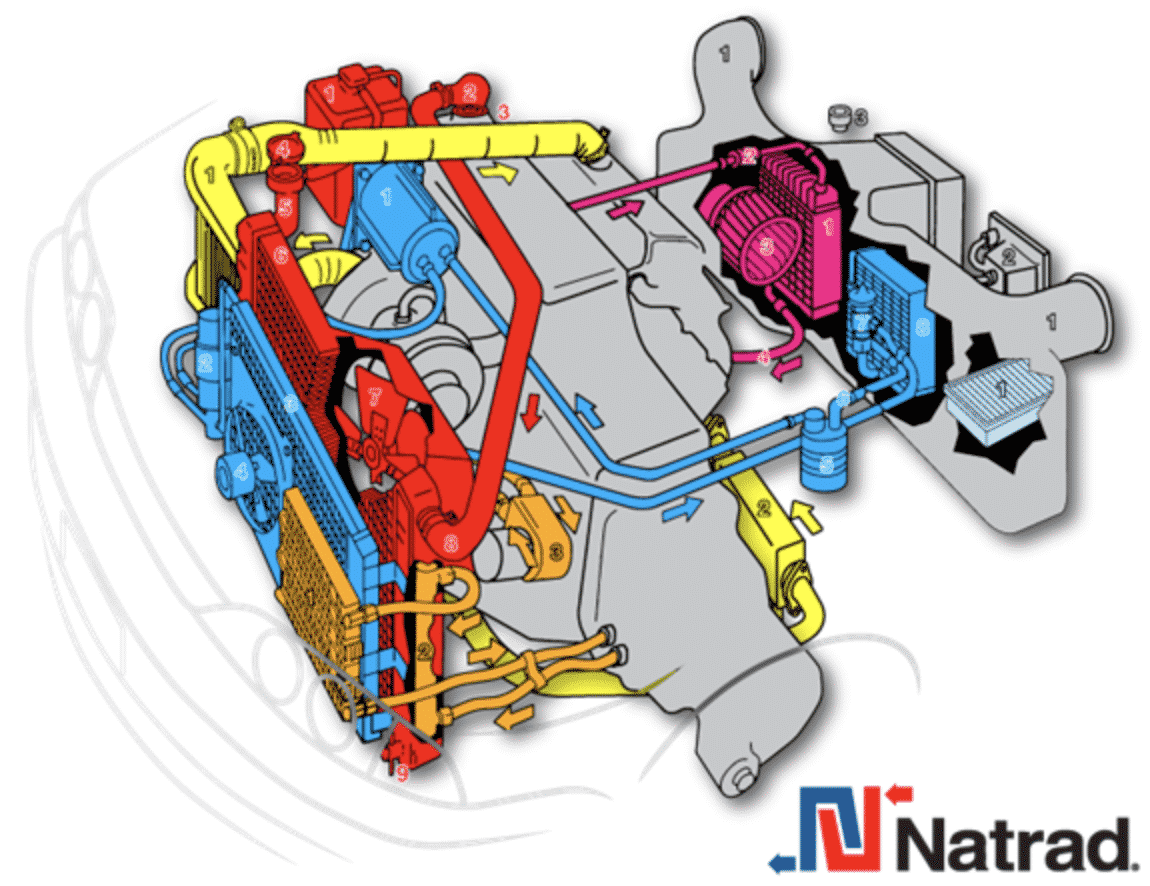How to Tell if Air in Cooling System
Has your car overheated recently?
Overheating is a sure sign that something has gone wrong within your cars cooling system. What the culprit may be however, is a bit trickier to navigate. In this article we will look at radiator 'airlock' and what symptoms it may cause.
There are a few different reasons airlock can occur, but it's best to resolve it quickly. Repeated strain on the system can not only reduce performance, but inflict damage on cooling system parts or the engine over time.
If your cooling system has exhibited problems, Nip into your nearest Natrad for advice from the cooling specialists. Natrad offers a free cooling system check valued at $55 in stores nationwide.
Car radiator airlock symptoms
It's not uncommon that certain cooling system malfunctions or issues are misdiagnosed. Things like overheating or leakage can be caused by several things. It is the same as when you go to the doctor with an ailment: similar symptoms can indicate an array of possible conditions.
So, how can you tell that your car has airlock? First, let's look at how the cooling system works. This will make it easier to understand why airlock has occurred.
What parts are in a cooling system?
A cooling system is made up of many different parts, all of which must work correctly for the overall system to function. System parts include:
- Radiator and radiator cap
- Water pump
- Radiator hoses
- Thermostat
- Expansion tank
- Cooling fan (with fan clutch if mechanically driven)
Here's a diagram of a typical car's cooling system so you can visualise where everything goes. Click the image to view an interactive diagram.

Important tip: the cooling system is a sealed system and these days it is usually pressurised. In order to maintain that pressure, the system must be closed, so the presence of air is not a good sign!
How does the cooling system work?
The cooling system's aim is to keep the engine at the ideal operating temperature while you're driving, so that it doesn't overheat and suffer from any heat inflicted damage. Anything above the ideal operating temperature should be cooled by the cooling system.
The thermostat is sensitive to temperature and when cooling is necessary it opens to allow the liquid coolant to circulate. The coolant passes through the engine block to absorb heat generated from combustion and then arrives at the radiator to be cooled. As the hot coolant flows through the radiator tubes, airflow passing over the fins carries away heat and brings the coolant's temperature down. Then it circles right back to the engine block and the cycle starts again.
What is radiator airlock?
Simply put, it is the presence of air bubbles inside the cooling system. Even a small amount can create air pockets which prevents proper circulation of coolant. Signs and symptoms of radiator airlock include:
- Overheating during normal driving
- Heater not functioning correctly
- Reduced performance
- Radiator leakage / losing coolant quickly
Regular overheating is not good for your engine, and if the problem isn't fixed it can lead to costly repairs down the track.
Why does airlock occur?
The most common cause of radiator air lock is a failure to maintain pressure. This can often involve the radiator cap. The cap not only makes sure there is no coolant spillage, but maintains the pressure in the system. If this fails at high temperature, air pockets can form. Air can also enter the system, causing air pockets to be caught inside. Luckily this is a pretty easy fix. However, while removing the air may be simple, it is important to identify the cause of airlock.
Other causes include:
- Radiator hose leak: Coolant may leak out and air may find it's way in, especially if the hose has a large split or has been ignored for some time.
- Improper flushing of the system: This may leave pockets of air trapped inside the system.
- Bad coolant refill: If the system is not properly filled it may allow bubbles to form.
- Blown head gasket: Bubbles may form as air is forced into the cooling system from the combustion cylinder.
Now that you know what radiator airlock is and know the symptoms, it's time to act. To avoid expensive repairs down the track, Nip into your nearest Natrad for a cooling system check. The cooling specialist can help determine why you may have airlock in the system and provide suitable solutions for your vehicle.
How to Tell if Air in Cooling System
Source: https://natrad.com.au/info-advice/car-radiator-airlock-symptoms/